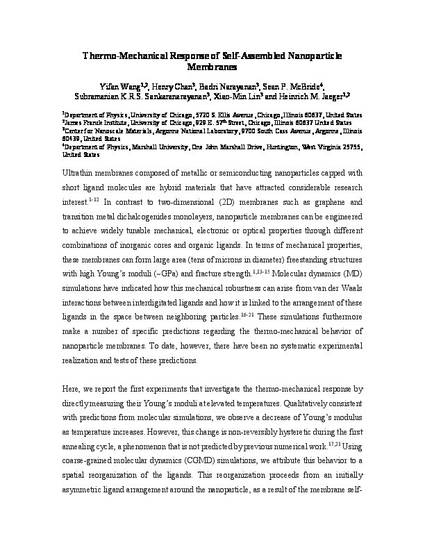
Ultrathin membranes composed of metallic or semiconducting nanoparticles capped with short ligand molecules are hybrid materials that have attracted considerable research interest.1-12 In contrast to two-dimensional (2D) membranes such as graphene and transition metal dichalcogenides monolayers, nanoparticle membranes can be engineered to achieve widely tunable mechanical, electronic or optical properties through different combinations of inorganic cores and organic ligands. In terms of mechanical properties, these membranes can form large area (tens of microns in diameter) freestanding structures with high Young’s moduli (~GPa) and fracture strength.1,13-15 Molecular dynamics (MD) simulations have indicated how this mechanical robustness can arise from van der Waals interactions between interdigitated ligands and how it is linked to the arrangement of these ligands in the space between neighboring particles.16-21 These simulations furthermore make a number of specific predictions regarding the thermo-mechanical behavior of nanoparticle membranes. To date, however, there have been no systematic experimental realization and tests of these predictions.

This is the Accept Manuscript. The version of record is available from the publisher at https://doi.org/10.1021/acsnano.7b02676. Copyright © 2017 American Chemical Society. All rights reserved.